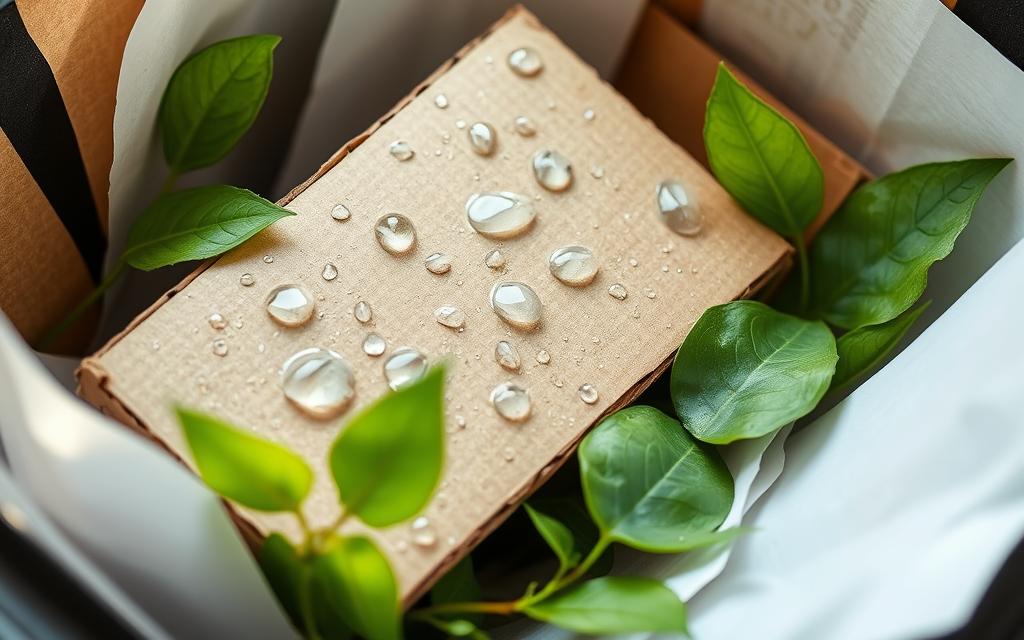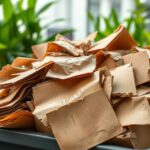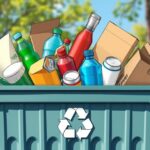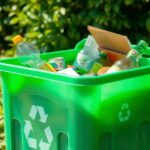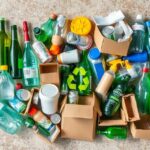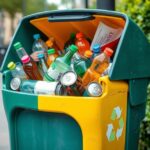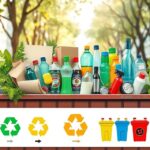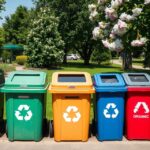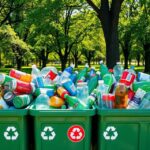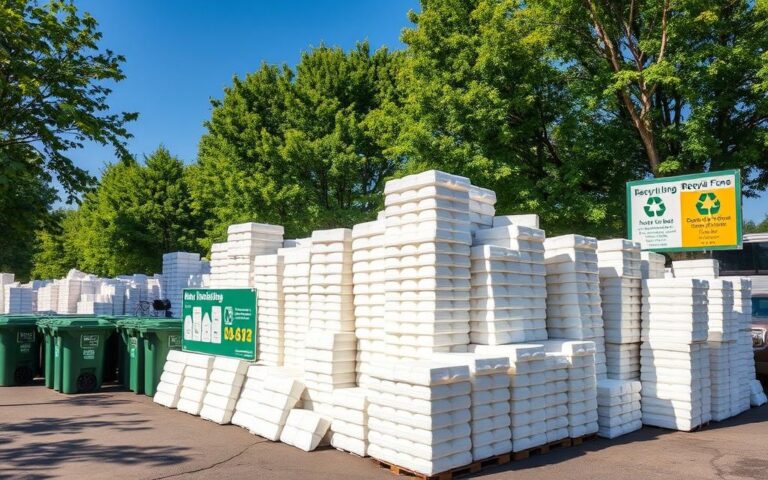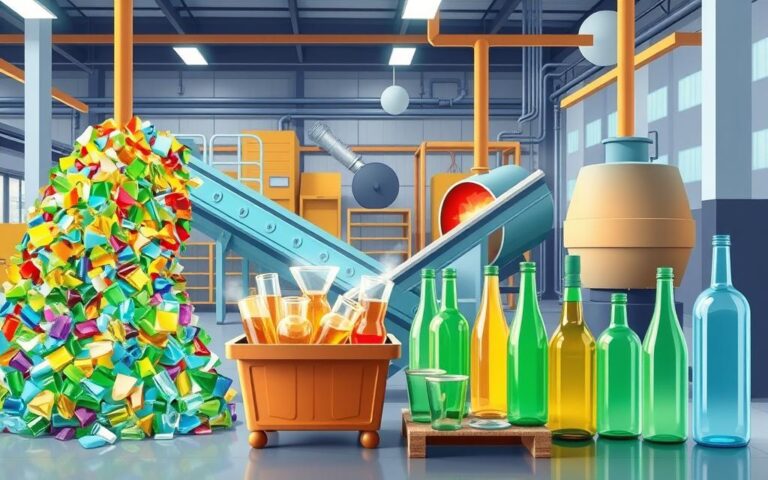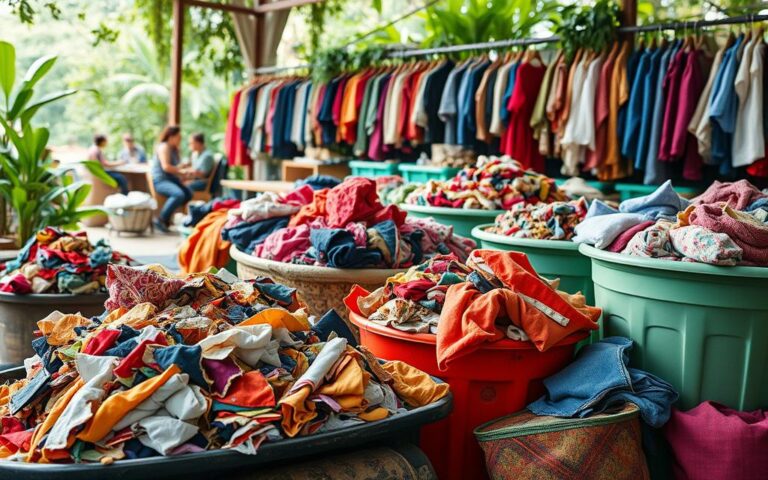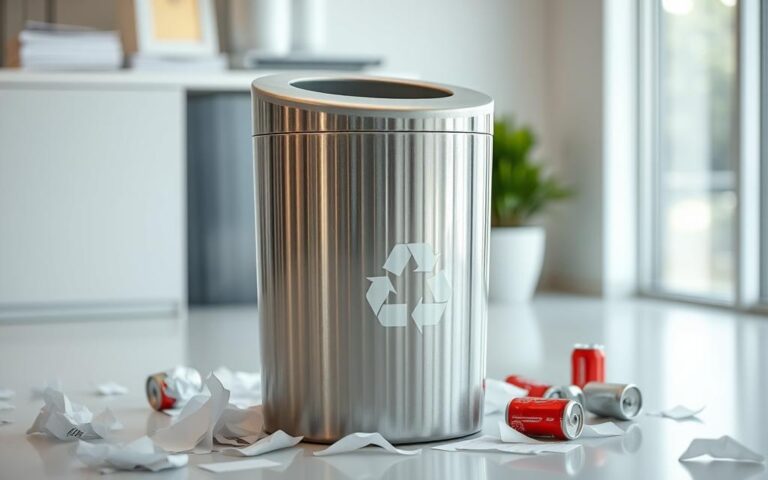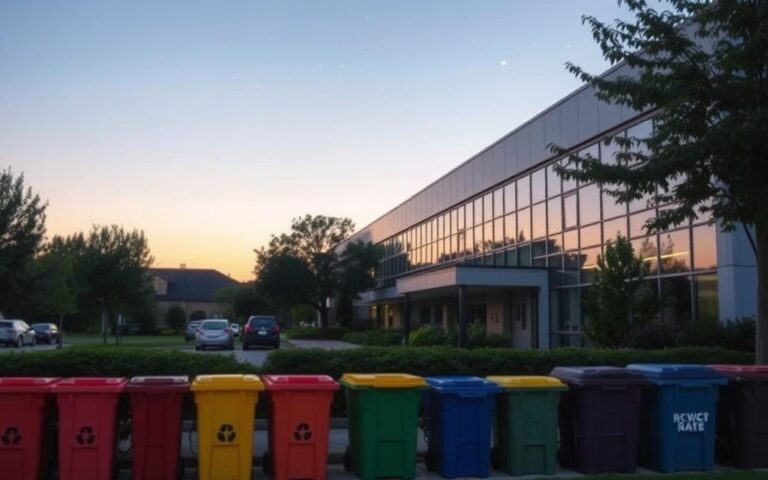Can You Recycle Wet Cardboard? Proper Disposal Tips
Recycling helps the environment greatly, and cardboard is often part of this. But, is recycling wet cardboard possible? Wet cardboard complicates recycling and can clash with local rules. Here, we’ll share tips on how to deal with wet cardboard when recycling.
Knowing how to recycle cardboard, especially when wet, is crucial. Wet cardboard can turn weak and break easily once dry. This makes it less valuable for recycling. Also, it might ruin other recyclable items. Sometimes, waste collectors won’t pick up bins with wet cardboard. So, knowing how to dispose of it properly is crucial.
We will look into why recycling cardboard matters, the issues with wet cardboard, and how to dispose of it right. Understanding this helps you recycle wet cardboard better. It also helps keep our ecosystem healthy.
The Importance of Recycling Cardboard
Recycling cardboard is crucial for reducing waste and saving natural resources. It helps create a circular economy, where we use materials more wisely. This greatly lessens the harm to our environment.
Environmental Benefits of Cardboard Recycling
Recycling’s impact goes beyond just getting rid of waste. By recycling cardboard, we save about 17 trees for each ton we process. Saving these trees helps keep diverse plant and animal life healthy. It also improves the air we breathe.
Moreover, recycling reduces the waste that ends up in landfills. This is important because organic waste in landfills releases methane, a strong greenhouse gas. By recycling, we cut down on this methane production.
In the UK, we’re running out of landfill space. So, recycling cardboard becomes a great solution. When companies and families recycle, they help protect our environment. Together, we work towards a cleaner and more sustainable future.
Recycling and Waste Reduction Statistics
Cardboard recycling statistics from 2022 show progress in recycling worldwide. North America leads with a 93.6% recycling rate. Europe isn’t far behind, with many countries recycling over 85% of their cardboard. In Asia, recycling is growing quickly, especially in China, a key player in the recycling market.
| Region | Recycling Rate |
|---|---|
| North America | 93.6% |
| Europe | 85%+ |
| Asia (China) | Growing |
These statistics show more people are learning about recycling’s benefits. Education on recycling boosts participation. It strengthens community efforts towards sustainability.
What Happens to Cardboard in the Recycling Process
The process of recycling cardboard involves several stages. It starts with collecting cardboard and ends with creating new products. Knowing this process helps in managing cardboard waste. It also shows the recycling quality factors that affect the final outcome.
Step-by-Step Process of Cardboard Recycling
The steps in recycling cardboard are vital for high-quality materials. Here’s a brief outline:
- Collection and Sorting: Cardboard comes from different places and is sorted. This removes contaminants like grease, oils, and food residue.
- Shredding: After sorting, the cardboard is cut into smaller pieces. This prepares it for the next stage.
- Pulping: The small pieces are soaked to break down fibers. This creates a pulp. In this stage, inks and other impurities are taken out.
- Cleaning and Screening: The pulp is then cleaned and screened. This ensures it’s pure by removing plastic, glue, and staples.
- Pressing: After cleaning, the pulp is pressed, dried, and made into new cardboard sheets or paper products.
Each of these steps is important in recycling cardboard. When cardboard is wet or dirty, it makes these stages harder. This affects the quality of the recycled product.
Key Factors Affecting Cardboard Recycling Quality
Certain factors impact the quality and success of recycling cardboard:
- Condition of Cardboard: Wet and falling-apart cardboard might not be recyclable. Slightly damp cardboard, if it retains its shape, can be recycled after drying.
- Contaminants: The presence of grease, oils, or food can make cardboard harder to recycle. This reduces recycling quality.
- Sorting Technology: Wet cardboard can cause problems for automated sorting machines. This can lead to stops and might raise costs if machines get stuck.
- Local Guidelines: Rules for recycling can differ in places. It’s important to check the rules about wet cardboard and other materials.
- Airing Techniques: Drying wet cardboard inside can help make it ready for recycling. This improves the recycling results.
Knowing these steps and factors improves cardboard waste management. Processing recycled cardboard efficiently helps the environment. It also saves trees needed for making new cardboard.
Can You Recycle Wet Cardboard?
Recycling wet cardboard is complex and affects the end result’s quality. It can be recycled, but it’s hard for recycling centers. These hurdles must be tackled efficiently.
Understanding the Impact of Wet Cardboard on Recycling
Wet cardboard greatly impacts recycling. If cardboard is too wet or dirty, it weakens and becomes hard to recycle. This could mean entire loads get rejected because of contamination like food or grease. Also, wet cardboard is heavier, making it more expensive to process.
In 2018, the recycling rate for paper and cardboard was 68.2% in the US. It shows how vital clean and high-quality materials are for recycling.
Guidelines for Recyclability of Wet Cardboard
Not all wet cardboard can be recycled the same way. It’s important to check its condition. You can recycle cardboard if it’s only a bit damp and still holds its shape. But if it’s really wet or dirty, it should go in the trash. This keeps the recycling stream clean.
A well-sorted load helps recycling centers work better. They can reduce waste and recycle more by sorting correctly. Here’s a brief guide on when to recycle wet cardboard:
| Condition of Cardboard | Recyclability | Rationale |
|---|---|---|
| Slightly Damp | Recyclable | Retains shape and integrity |
| Heavily Soaked | Not Recyclable | Risk of contamination and equipment clogging |
| Contaminated (e.g., food residues) | Not Recyclable | Impacts overall quality of recycled material |
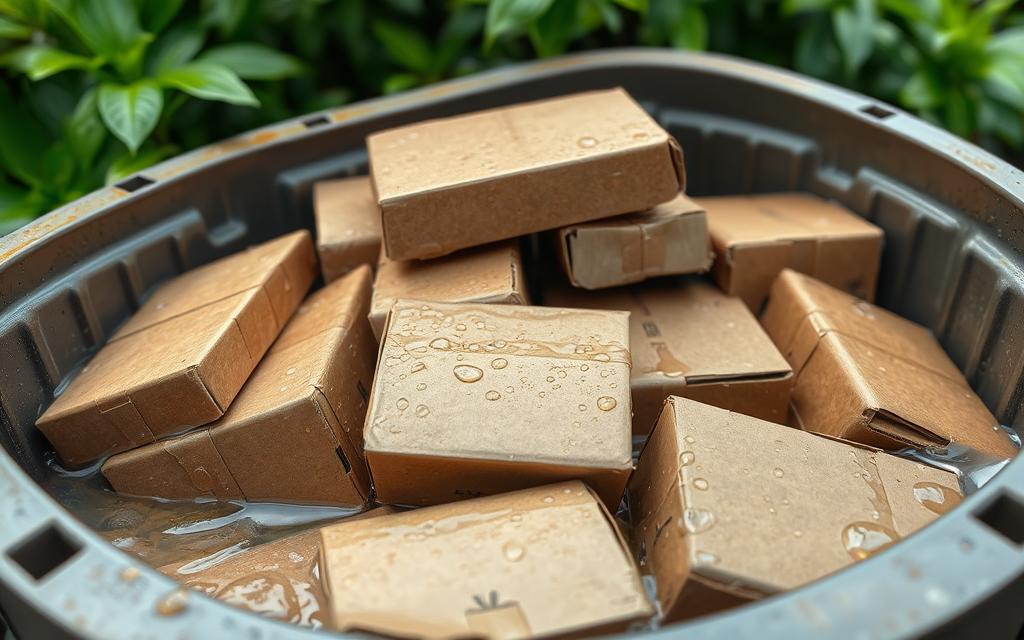
Best Practices for Cardboard Disposal
Managing cardboard waste well boosts recycling and helps the environment. It’s important to handle wet cardboard correctly. Doing this keeps the recyclable material in good shape and follows local recycling rules.
How to Dry Out Wet Cardboard Before Recycling
To keep wet cardboard in good condition, drying it out is key. Here’s how you can dry wet cardboard:
- Place cardboard in a dry and well-ventilated area.
- Allow adequate air circulation around the cardboard.
- Remove any excessively wet or contaminated parts of the cardboard.
These methods help businesses keep cardboard recyclable. They avoid the contamination that hurts the recycling process.
Local Recycling Guidelines to Consider
It’s vital to follow local recycling rules for cardboard. Different places have their own rules about recycling paper stuff. Knowing these local recycling guidelines means you’re doing things right. In places like Pennsylvania and New Jersey, recycling paper is a must. Talk to recycling centres to learn the right way to dispose of items. This includes wax-covered or dirty cardboard, which messes up recycling.
Being informed about the best cardboard disposal practices and local rules really helps. It raises recycling rates and protects our planet.
| Practice | Benefit |
|---|---|
| Drying wet cardboard | Improves quality for recycling |
| Removing wet sections | Reduces contamination risks |
| Checking local guidelines | Ensures compliance with recycling laws |
Conclusion
Disposing of wet cardboard correctly is important for recycling. It’s vital to know that moisture affects cardboard strength. Keeping cardboard dry helps keep it recyclable.
It’s key to check local recycling rules before you start. This is because different places have different rules about wet cardboard. In humid areas, slightly damp cardboard might be okay. You can also compost it, turning it into good material for gardening.
Proper disposal of wet cardboard boosts recycling and helps the planet. By learning how to prepare cardboard for recycling, like removing water, we play a big part in eco-friendly practices. This ensures our efforts in recycling are successful.
FAQ
Can I recycle wet cardboard?
Technically, you can recycle wet cardboard. However, it makes the recycling process harder. When wet, the fibres might not hold together well, risking contamination. It’s better to dry it as much as you can before recycling.
How should I dispose of heavily soaked cardboard?
If your cardboard is heavily soaked or dirty, throw it in the regular waste. Always check the cardboard. Recycle it if it’s just a bit damp and still holds its shape.
What are the environmental benefits of recycling cardboard?
By recycling cardboard, we cut down on landfill waste, save our natural resources, and reduce harmful gas emissions. It’s key for keeping our planet healthy and supports reusing resources efficiently.
What factors affect the quality of recycled cardboard?
The quality of recycled cardboard can drop if it has contaminants like styrofoam, oils, or leftover food. Its condition, especially if wet, also has a big impact.
What are the best practices for drying out wet cardboard?
For slightly damp cardboard, dry it in a place that’s dry and airy. Good airflow helps lower moisture. Always remove parts that are too wet or dirty before recycling.
How can I find local recycling guidelines for cardboard?
It’s essential to look into your local recycling rules or ask your area’s waste management about it. Different places have different rules.
How much landfill space can be saved by recycling cardboard?
Recycling one tonne of cardboard saves up to nine cubic yards of landfill space. This shows how recycling can make a big difference.

